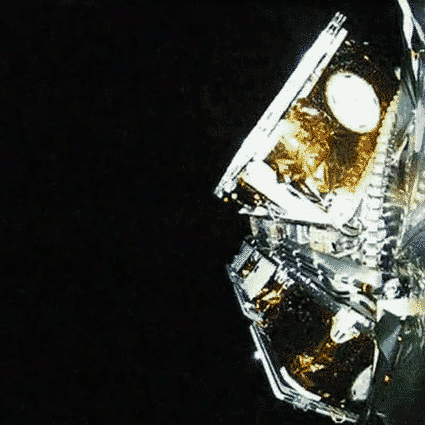Jason Davis • Dec 21, 2015
SpaceX Falcon 9 Returns to Flight, Sticks Landing at Cape Canaveral
For the first time in the history of spaceflight, a rocket stage that helped push a payload into orbit flew back to Earth and landed upright.
In grand fashion, SpaceX returned its Falcon 9 rocket to flight for the first time since June, successfully deploying 11 ORBCOMM OG2 communications satellites into low-Earth orbit this evening. About two minutes into flight, the Falcon's first stage shut down, separated and used a series of engine burns to fly back to the Florida coast.

SpaceX webcast commentators said the spent rocket was expected to reach a height of about 200 kilometers before plunging back to the company's newly christened Landing Zone 1, located about 9 kilometers southeast from the Falcon 9 launch pad.
Employees at SpaceX's Hawthorne, California headquarters cheered emphatically as a bright orange speck blazed into view on video screens tracking the landing. Just before touchdown, the first stage deployed its landing legs and came into view against the darkened Cape Canaveral sky. The rocket settled onto the landing pad and the single center engine shut down, marking a giant leap forward in SpaceX's quest for reusable rocketry.

SpaceX ORBCOMM OG2 launch webcast The landing sequence begins at 41 minutes, 45 seconds.Video: SpaceX
It was the first Falcon 9 to fly since the loss of the International Space Station-bound CRS-7 mission on June 28. On that flight, a high-pressure helium bottle broke loose from a strut, overpressurizing the upper stage's liquid oxygen tank. The rocket broke apart a few seconds later.
SpaceX spent nearly six months fixing the problem, all while implementing the third set of major Falcon 9 upgrades since the rocket debuted in 2010.
The vehicle's most prominent enhancement is the introduction of supercooled propellant, which increases thrust. On Twitter, SpaceX CEO Elon Musk said the rocket's liquid oxygen temperature is now chilled to minus 340 degrees Fahrenheit, with its rocket-grade kerosene RP-1 fuel dipping to minus 20 degrees. By comparison, the space shuttle's liquid oxygen temperature was minus 297 degrees.
The new supercool liquid oxygen proved to be a challenge during static firing tests, during which the rocket's engines are briefly ignited while the vehicle remains bolted to the launch pad. On Friday, Dec. 18—the third consecutive day of attempts—SpaceX finally cleared the last of its preparatory hurdles and fired the Falcon 9's engines for the first time at Cape Canaveral in a half-year.
That paved the way for a launch opportunity yesterday evening. But just a few hours before liftoff, Musk said simulations of the rocket's first stage landing showed a 10 percent higher chance of success on Monday.

SpaceX opted to wait, and the wait paid off.
After the first stage landed, the second stage pressed on to orbit with the mission's primary payload. About 15 minutes after liftoff, the first pair of ORBCOMM satellites were deployed into space. A few minutes later, all 11 had been released. The satellites will complete a new ORBCOMM-operated communications constellation in low-Earth orbit.
Monday's landing marks the culmination of a long SpaceX campaign to recover a used Falcon 9 rocket stage after launch. Early attempts practiced the technique by soft-landing a booster in the Atlantic Ocean. SpaceX also used thruster-powered drone ships to autonomously position themselves underneath descending Falcon rocket sections.
The first drone ship landing attempt in January failed, with the booster tilting heavily as it smashed into the landing platform's deck. Three months later, a second try came closer, but the rocket tipped over after landing.
Earlier this month, Florida Today reported SpaceX was hoping to fly its upgraded Falcon booster all the way back to Cape Canaveral. The company had to gain approval from the Air Force and Federal Aviation Administration, and a press release warned residents of Brevard County, Florida to be prepared for sonic booms emanating from the inbound rocket.
During Monday's webcast, SpaceX said it would still use the drone ships for future Falcon 9 flights where a return to dry land is not feasible.


Support our core enterprises
Your support powers our mission to explore worlds, find life, and defend Earth. You make all the difference when you make a gift. Give today!
Donate

 Explore Worlds
Explore Worlds Find Life
Find Life Defend Earth
Defend Earth

